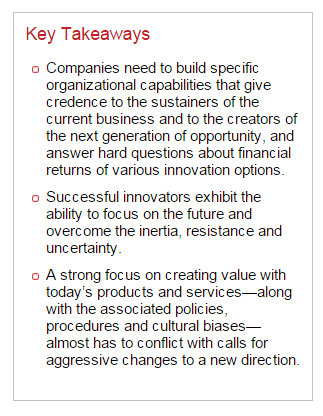 Marketers are concerned about where to look for the next wave of innovations. Understandably, the quest often focuses on the content of an innovation, such as an idea for a new product or business process. If companies could only find the best innovations to develop, then business success would follow.
Marketers are concerned about where to look for the next wave of innovations. Understandably, the quest often focuses on the content of an innovation, such as an idea for a new product or business process. If companies could only find the best innovations to develop, then business success would follow.
But there’s another way to look at the opportunities and barriers to innovations taking off. Companies make many decisions that involve specific tradeoffs between the pursuit of a particular innovation and holding off on investment and support, and continuing “business as usual.” Companies are not ignorant about the potential of future innovations. However, in many cases, there are compelling reasons not to pursue innovation. Anticipated business performance under the current business model may be far superior to a case built on future revenue and profit.
How can companies avoid being the “prisoners of their own success” that limits willingness to innovate, such as by staying with what has worked in the past versus going with something unproven? How can they mitigate the risks of innovation and make better decisions about which ones to bet on? Specific steps can be undertaken that both acknowledge the real tradeoffs that have to be made and build momentum for innovations that will pay back.
Look Outward
Innovation often is associated with some form of brainstorming. The notion is that when the right groups of outside experts, company insiders or consumers are convened, the best ideas will emerge. And, indeed, there are numerous and documented ways to design and facilitate group processes that will generate the best content. Careful application of the tools can increase the odds that highly innovative and differentiated ideas are developed, such as “new to the world” products and services that could reshape the company and the market. Systematic exploration of incremental improvements also can be considered to increase potential short-term benefits.

Parallel to idea generation are research and evaluation processes that can quantify the likely interest level in innovative concepts. They range from voice of the customer studies to concept and product testing to conjoint analysis. Using the best techniques can help determine the best concept for the relevant segment of customers, and provide input on pricing, features and packaging to take to market.
Written by Gordon Wyner, vice president of client solutions at Millward Brown
Source:ama


